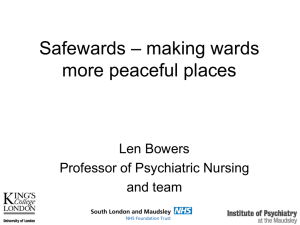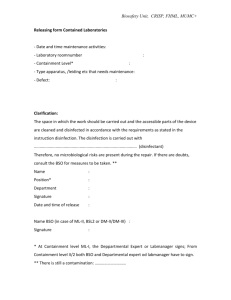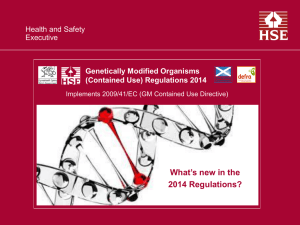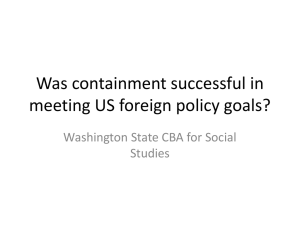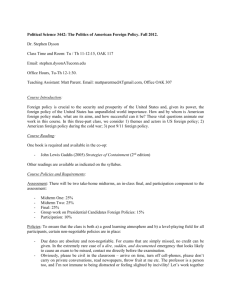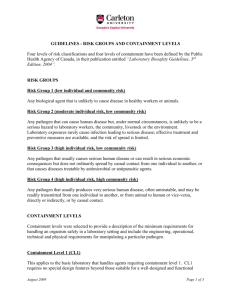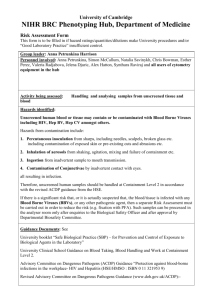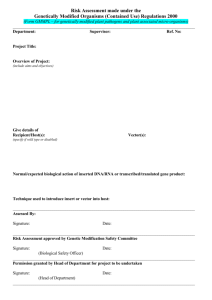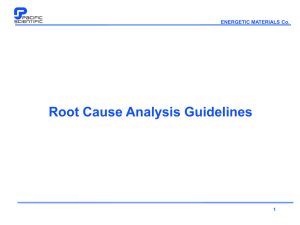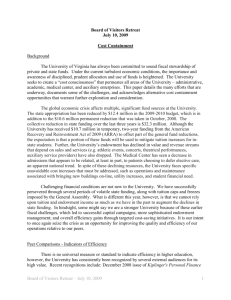sa - Mental Health & Learning Disability Nurse Directors` and Leads`
advertisement
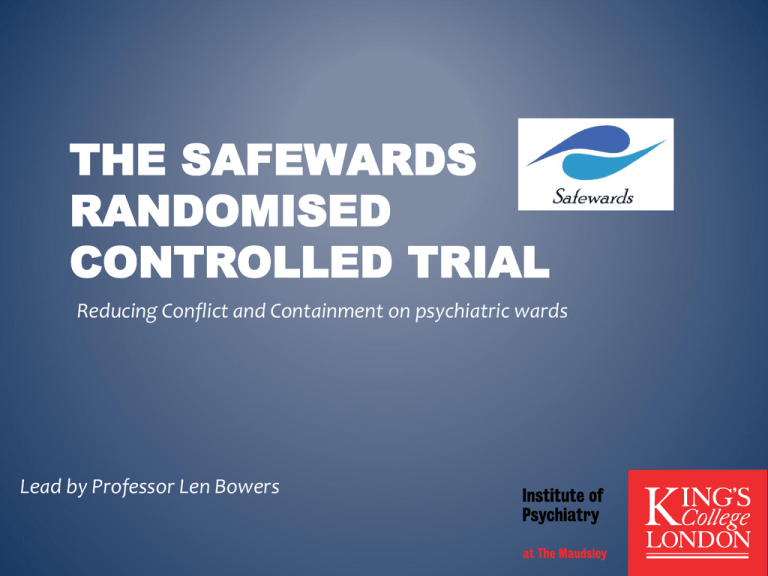
THE SAFEWARDS RANDOMISED CONTROLLED TRIAL Reducing Conflict and Containment on psychiatric wards Lead by Professor Len Bowers CONFLICT AND CONTAINMENT Conflict • • • • • • Aggression Rule breaking Substance/alcohol use Absconding/missing Medication refusal Self-harm/suicide Containment • • • • • • PRN medication Coerced IM medication Special observation Seclusion Manual restraint Time out THE SAFEWARDS MODEL Staff modifiers Patient modifiers Originating domains Flashpoints Conflict Containment PATIENT COMMUNITY Patient-patient interaction Contagion & discord Patient modifiers Anxiety management; Mutual support; Moral commitments; Psychological understanding; Technical mastery; Staff modifiers Explanation/information; Role modelling; Patient education; Removal of means; Presence & presence+ Flashpoints Assembly/crowding/activity Queuing/waiting/noise Staff/pt turnover/change Bullying/stealing/ prop. damage CONFLICT & CONTAINMENT Denial of request; Staff demand; Limit setting Bad news; ignoring Flashpoints Staff anxiety & frustration; Moral commitments; Psychological understanding; Teamwork & consistency; Technical mastery; Positive appreciation Staff modifiers Rules; Routine; Efficiency; Clean/tidy; Ideology; Custom & practice Internal Structure STAFF TEAM THE SAFEWARDS TRIAL Aim: – Devise a set of the most feasible interventions for inpatient nurses with potentially maximal impact on conflict and containment – Subject those to a rigorous RCT. DEVELOPMENT OF INTERVENTIONS • Generated ideas, started to narrow down to.. •Consulted expert nurses and service users, got it down to.. •Pilot Study ( 4 Wards (2/2)) took out a further 6 • To full Trial (31 Wards (16/15)) FINAL INTERVENTION LIST Experimental intervention (Organisational) Mutual Help Meeting, Clear Mutual Expectations, Soft Words, Talk Down, Know Each Other, Reassurance, Positive Words, Bad News Mitigation, Discharge Messages, Calm Down Methods. (n = 10) + handbook Active Control intervention (Wellbeing) desk exercises, pedometer competitions, healthy snacks, diet assessment and feedback, health and exercise magazines, health promotion literature, linkages to local sports and exercise facilities Mean No. of conflict and containment events/shift MAIN OUTCOMES CONFLICT 14.6% decrease CI 5.4 – 23.5% p = 0.004 CONTAINMENT 23.6% decrease CI 5.8 – 35.2% p = 0.001 ADDITIONAL INFO • Fidelity check indicated a low take up (38%) of interventions in the time frame. • Multiple checking of statistics including removing outliers and modelling for missing data. Does not change results. • Disappointing return of staff questionnaires. • Turn it around and look as if Wellbeing Intervention makes staff fitter. Still checking. • Bottom line – we recommend all 10 interventions are adopted. DISSEMINATION • Trial results first announced NPNR in September 2013 • Since then a programme of dissemination both nationally and internationally • Initially this was combined with dissemination through social media. • In December of 2103, www.safewards.net went online SINCE SEPTEMBER.. • 9 “International “ presentations ( Europe and Australia) • 25 presentations to UK conferences, Universities, Trusts or Wards. • 500+ Facebook Members ( International) • 100+ Twitter members ( primarily UK) • Definite contact in 31/59 NHS trusts (England) • 9 Identified Wards/units in Trusts additional to Trial (9) and Pilot wards (1) • 2 non UK (Canada and Holland) • 1 Trust has Safewards as a CQUIN or Quality standard for 2014 ITS ALL HERE!!! WWW.SAFEWARDS.NET TO HAVE MORE DETAILED PRESENTATION FOR YOUR TRUST •Geoff.brennan@kcl.ac.uk
